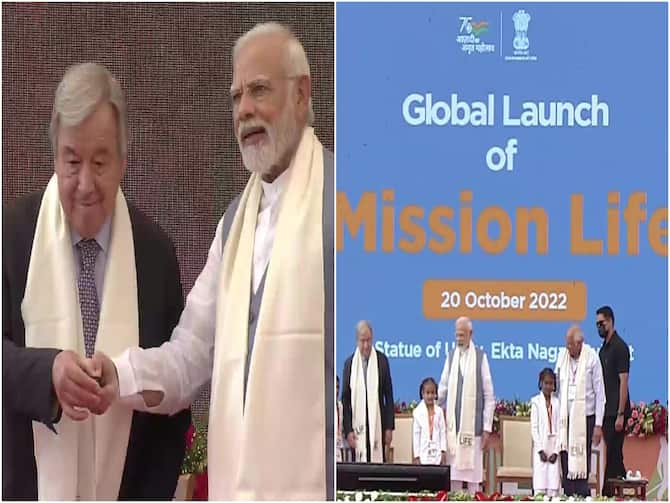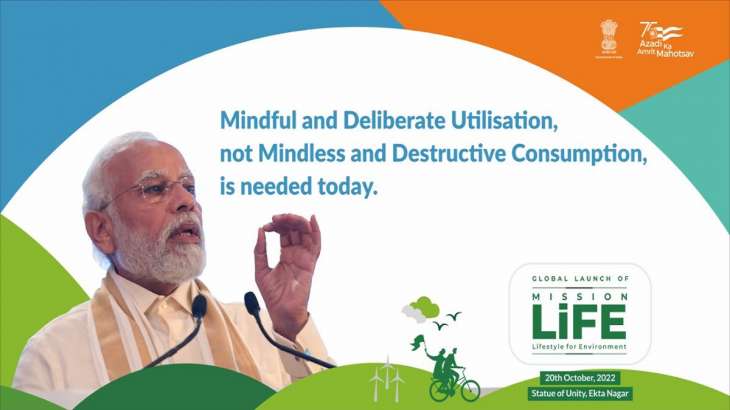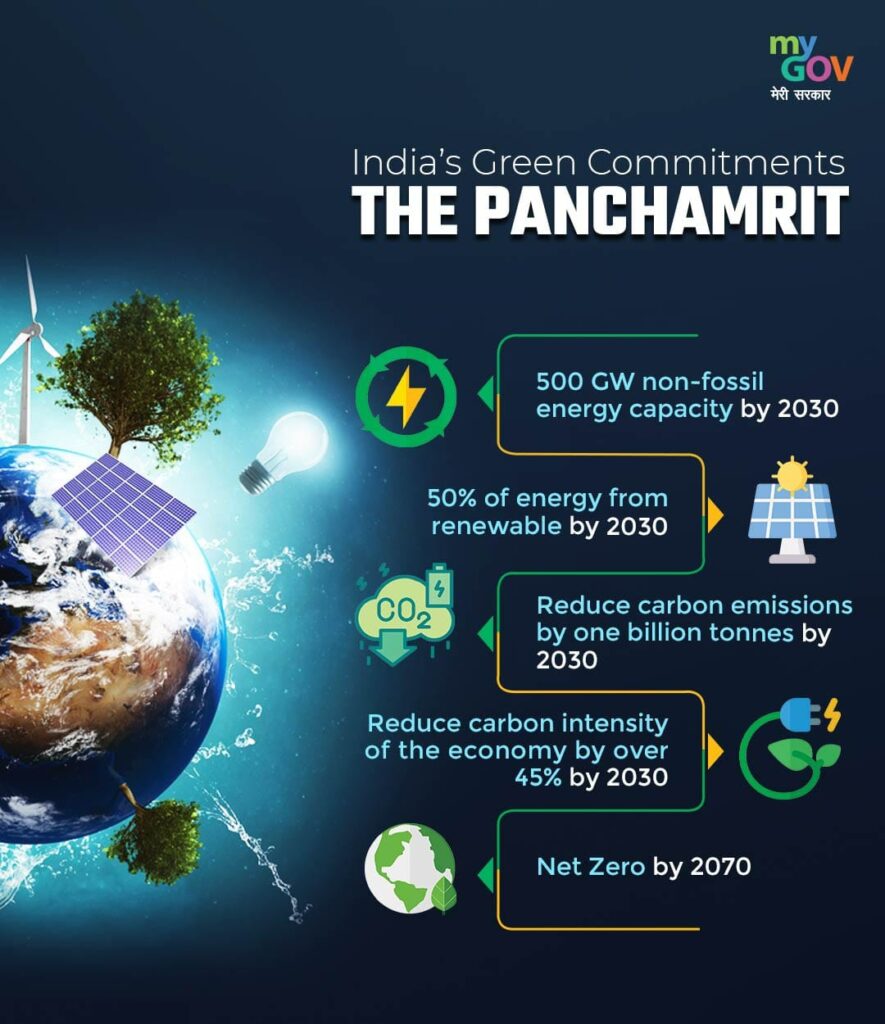The Hon’ble Prime Minister of India, Shri Narendra Modi, unveiled Mission LiFE at the 2021 UN Climate Change Conference (UNFCCC COP26) to put people’s actions at the centre of the global climate action narrative.
 Source: ABP live
Source: ABP live
Mission Life For Climate Change
The current “use-and-dispose” economic model is based on wasteful and destructive consumption; LIFE proposes switching to a circular economic model instead. The goal of the Mission is to encourage people to make small changes in their routines that, taken collectively, can have a major impact on global warming.
 Source: India Tv
Source: India Tv
LiFE hopes to use the power of social networks to shift climate-related norms in society. The Mission intends to establish and cultivate a worldwide community of “Pro-Planet People” (P3) who will all share a desire to live more sustainably. The P3 community is one means through which the Mission hopes to establish an ecosystem that can encourage and support the development of environmentally responsible habits with the potential to thrive on their own.
Mission Life to achieve the target
India’s goal to achieve ‘net zero’ emissions by 2070 has solidified the country’s position as a worldwide leader, despite the fact that its current per capita emissions are less than half the global average. All the other countries that have promised to reach “net zero” emissions by 2050 are still producing more pollution than the world average.
The present strategy relies on the following main pillars:

- Renewable sources of Energy
- Investing in Green Technologies
- Geo Engineering Solutions
- Electric vehicles
- Reducing Emissions
- Climate Financing
Role of climate change in ensuring Sustainable Development
Lessening consumption and waste—There is substantial evidence in the literature to suggest that the consumption of affluent households both determines and promotes an increase in emissions of carbon dioxide. The mobility and housing size of one’s socioeconomic status come next. By choosing reflecting building materials, for instance, we may reduce our impact on the environment and save money.
 Source: UN
Source: UN
There has to be a “shift” in consumer behaviour away from products and services that have a high carbon footprint and a high resource consumption, such as the transition from personal automobiles to public transportation like buses and trains. Changing one’s behaviour, in this case one’s diet from one based on animal products and processed foods to one based on the plants available at any given season.
Affordable housing and the elimination of biomass stoves are only two examples of how income might be more fairly distributed and put to better use.
A look at India’s past performance
India has a history of successfully transforming the goals of national missions into community-wide initiatives. One such example is the Swachh Bharat Mission’s effectiveness in enlisting people of all income levels to improve the country’s sanitation and health.
 Source: UNECE
Source: UNECE
From the pedestal of the Statue of Unity, a global mission dedicated to realising the LIFE vision is taking off.
The Prime Minister and the Secretary-General have issued a global call to action for all consumers to become “Pro Planet People” by 2027, committing to a series of incremental but cumulative adjustments to their habits and routines.
What should government do to make Mission Life successful and hinder the climate change
For the purpose of studying the framework of sustainable wellbeing, the government must now establish dedicated research groups. It needs to examine the factors that contribute to the privileged class’s propensity for wasteful spending, disseminate information about potential economic system changes, and publicise the findings of research that quantify how much power is required to maintain a minimum standard of living.
 Source: MyGov
Source: MyGov
India, the United Nations, and the other 26 organisations are all enthusiastic participants in this effort to breathe new life into the fight against climate change. India is a fantastic launchpad for the global LIFE vision. With a population of nearly 1,300,000,000, the momentum gained from a successful jan andolan here would be tremendous.
Countries around the world are taking urgent, coordinated action to reduce emissions, as evidenced by the Paris Agreement and the COP26 session in Glasgow. For this to be successful, we require both the scale and direction of a global movement, as well as the sharing and development of relevant frameworks.
The UN Environment Programme (UNEP) estimates that a 20% reduction in global carbon emissions is possible if just one billion of the world’s eight billion people make environmentally favourable choices in their everyday lives.













